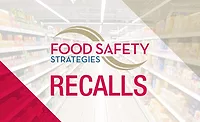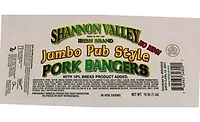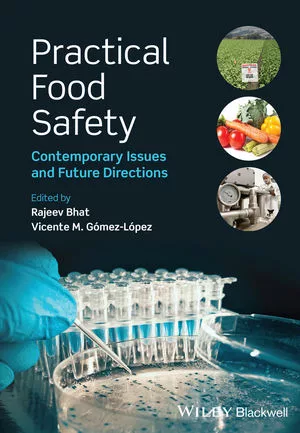Current Issues in Raw and RTE Products

According to new data released by the U.S. Department of Agriculture’s Food Safety and Inspection Service (USDA FSIS), the meat and poultry industry is making great strides in implementing and complying with food safety related mandates, particularly those to do with microbial contaminants. In a series of announcements this fall, the agency reported significant drops in the number of pathogen-positive samples taken from both raw and ready-to-eat (RTE) meat and poultry products as compared with findings in years past. The numbers are encouraging:
• In September 2003, FSIS released data showing a drop in the number of E. coli O157:H7 positive samples in ground beef collected through Aug. 31, 2003 compared with past years. Of these samples, 0.32% tested positive for E. coli O157:H7, down from 0.78% in 2002 and 0.84% in 2001.
• In October 2003, USDA FSIS released new microbiological data showing a one-year, 25% drop in the percentage of positive Listeria monocytogenes samples in RTE meat and poultry products and a 70% decline compared with years prior to the implementation of the Hazard Analysis and Critical Control Point (HACCP) system (Figure 1).
• In November 2003, FSIS announced that the rate of Salmonella in raw meat and poultry dropped by 66% over the past six years and by 16% compared with 2002. The agency reports that of the samples collected and analyzed between Jan. 1 and Oct. 31, 2003, 3.6% tested positive for Salmonella, as compared with 4.29% in 2002 and 10.65% in 1998.
While the agency and others largely credit these microbial contamination reduction rates to the implementation of HACCP, it is also true to say that meat and poultry companies are looking at their processes and products more closely, giving them more scrutiny and understanding them better overall. While HACCP has played a major role in reducing the incidence of undesirable pathogens, good implementation of sanitation standard operating procedures (SSOP) programs, improved environmental plant hygiene strategies, and the introduction of more standardized training are other components that play an important part. Industry has developed a slew of useful new intervention technologies and test methods that also play an critical role in the microbial reductions and verification of reported reductions, both on the raw and RTE sides of the business.
When examining the current issues and challenges faced by the industry, one can clearly see that meat and poultry companies as a whole have rapidly moved beyond the learning curve stage of basic HACCP plan development into the realm of advanced food safety system implementation. Today, these companies are implementing next-level food safety strategies and mechanisms to comply with existing and new regulatory mandates, as well as to protect their brands and meet consumer demand for safe and wholesome meat products. For RTE meat and poultry processors, the most pressing challenge is understanding and complying with the most recent FSIS directive that focuses on the control of Listeria monocytogenes and the validation of RTE processes. For both raw and RTE meat and poultry producers, the ongoing challenge is accurate validation of HACCP programs as company plans are reassessed, particularly by government inspectors, as well as the continuous improvement of HACCP training for plant personnel.
Listeria: The Ghost in the Machine
Today, Listeria monocytogenes is clearly the foodborne illness-causing pathogen at the top of the RTE meat and poultry product manufacturer’s list of concerns. This animal pathogen first emerged as a major concern for public health in the 1980s in California when an outbreak associated with Mexican soft cheese caused the deaths of 35 people and aborted fetuses in pregnant women. We now know that Listeria monocytogenes poses a serious illness risk for immunocompromised individuals, the elderly, pregnant women and children, and that it can also cause foodborne illness in those with healthy immune systems. We also know that this ubiquitous bacteria is a very difficult pathogen to control in the food processing environment because it can grow in refrigerated temperatures and find harborage points in many areas within a facility and on many types of surfaces.
In 2001, FSIS and the U.S. Food and Drug Administration (FDA) issued a relative risk ranking and predicted median cases of listeriosis by food category on both a per serving and per annum basis. Of the ready-to-eat foods identified as moderate to high risk on a per serving basis, the top three are produced by the meat industry: deli meats, frankfurters that are not reheated, and pate/meat spreads. The major food safety concern centers on products that do not receive any additional cooking that would destroy the pathogen on the surface of the RTE product. Under the Federal Meat and Inspection Act and the Poultry Products Inspection Act, RTE product is adulterated if it contains Listeria monocytogenes or if it comes into direct contact with a food contact surface that is contaminated with the pathogen. Listeria monocytogenes can contaminate and grow in RTE products if they are not formulated or produced in a manner to destroy or suppress the growth of the organism.
Looking for quick answers on food safety topics?
Try Ask FSM, our new smart AI search tool.
Ask FSM →
In June 2003, FSIS published an interim final rule for the control of Listeria monocytogenes on certain ready-to-eat (RTE) meat and poultry products. As of Oct. 6, 2003, the rule requires that certain RTE meat and poultry processors implement one of three risk-based alternatives for categorizing their products, develop written programs to control Listeria monocytogenes and verify the effectiveness of those programs through testing. The rule also requires RTE product processors to share plant information and testing data with the agency, and emphasizes the importance of incorporating a multiple hurdle strategy comprised of a combination of microbial interventions in the RTE processing environment.
The “certain” RTE meat and poultry products that fall under the Listeria rule are those products that are exposed to the environment after the initial lethality step, which is a process, including cooking or the application of an antimicrobial agent or process, that eliminates or reduces the number of pathogenic microorganisms on or in a product to make the product safe for human consumption. In other words, the product is considered post-lethality exposed if it comes into direct contact with a food contact surface after the lethality treatment in a post-lethality processing environment. FSIS defines the post-lethality processing environment as an “area of an establishment into which product is routed after having been subjected to an initial lethality treatment. The product may be exposed to the environment in this area as a result of slicing, peeling, re-bagging, cooling semi-permeable encased product with a brine solution, or other procedures.”
Manufacturers of these types of products have been preparing for the FSIS Listeria regulation for some time, proactively incorporating stringent sanitation programs and sanitary equipment design principles, post-lethality treatments and antimicrobial agents into their processes to better assure customers of a safer product. However, these RTE manufacturers do face some implementation challenges, particularly with regard to validating their interventions and gathering the appropriate supporting scientific data that is required to satisfy FSIS Consumer Safety Inspectors (CSIs) and Consumer Safety Officers (CSOs).
Once a manufacturer has established that the plant is producing RTE meat and poultry products that fall under the FSIS rule, the establishment must select one of the following three alternatives to control for Listeria monocytogenes:
• Alternative 1. Employ both a post-lethality treatment and a growth inhibitor (antimicrobial agent or process) for Listeria monocytogenes on RTE products (Figure 2). Establishments opting for this alternative will be subject to FSIS verification activity that focuses on the post-lethality treatment’s effectiveness. Sanitation is important but is built into the degree of lethality necessary for safety.

• Alternative 2. Employ either a post-lethality treatment or a growth inhibitor for the pathogen on RTE products (Figure 3). Establishments opting for this alternative will be subject to more frequent FSIS verification activity than those in Alternative 1.

• Alternative 3. Employ sanitation measures only (Figure 4). Establishments opting for this alternative will be targeted with the most frequent level of FSIS verification activity. Within this alternative, FSIS will place increased scrutiny on operations that produce hotdogs and deli meats because they are high-risk products for listeriosis as identified in the 2001FSIS/FDA risk ranking.

As defined by FSIS, a post-lethality treatment is a kill step that is applied or is effective after post-lethality exposure. It is applied to the final product or sealed package of product in order to eliminate the level of pathogens resulting from contamination from post-lethality exposure. An antimicrobial agent is defined as a substance in or added to an RTE product that has the effect of reducing or eliminating a microorganism, including a pathogen such as L. monocytogenes, or that has the effect of suppressing or limiting growth of L. monocytogenes in the product throughout the shelf life of the product. Examples of antimicrobial agents added to RTE products are potassium lactate and sodium diacetate. The manufacturer also may opt to use an antimicrobial process, which is defined as an operation, such as freezing or procedures for pH or water activity control, applied to an RTE product that has the effect of suppressing or limiting the growth of microorganism such as L. monocytogenes, in the product throughout the shelf life of the product.
The major thrust of FSIS Directive 10,240.4, Verification Procedures for the Listeria monocytogenes Regulation and Microbial Sampling of Ready-to-Eat (RTE) Products for the FSIS Verification Testing Program, and related compliance guidelines focuses on moving the industry toward validating these interventions on the RTE side to reduce the levels of Listeria monocytogenes. This is the primary current challenge for the industry in terms of compliance with the final rule: How do you validate interventions and how much data is enough? While the agency’s compliance guidelines spell out what its expectations of results from the application of a post-lethality treatment—a minimum of 2-log reduction of Listeria monocytogenes for post-lethality treatments, and no more than a 1-log increase in Listeria monocytogenes over the shelf life of the product for an antimicrobial agent—there is little by way of how best to validate these intervention processes.
In addition, while the agency does not call these “performance standards” and they are not considered “regulatory” because they are in the compliance guidelines, these measurements must be considered as the RTE meat or poultry manufacturer’s gauge for determining whether the interventions will be truly considered effective post-lethality treatments or antimicrobial agents. Many of the medium- and small-sized operators producing RTE products are not accustomed to the requirements of process validation, and these companies will have a more difficult time during the initial implementation of the rule. In prior years, FSIS operated in a command-and-control mode in which the agency, not the processor, was responsible to validate processes as need be. In addition, these smaller sized operators may not be able to afford additional intervention technologies, do not have the ability to validate them, or may not even know what a log reduction is. Hence, there are some significant challenges for this segment of the industry to develop or acquire the validation of these interventions as FSIS expects and requires of them.
When searching out supporting data to validate interventions, RTE manufacturers should review as much of the available scientific literature as possible. Essentially, FSIS says that if a company has a scientific reference identical to its particular process and product, they can use that reference as their validation. However, it has yet to be determined how much scrutiny will be given to companies that provide FSIS with information published in the scientific literature that is not identical to the company’s operation or particular product. Acquiring the best available process and intervention validation information possible is the first step to success. Trade associations such as the National Meat Association, the International HACCP Alliance, the Poultry Science Association and the American Meat Institute Foundation can offer much in the way of published and peer-review articles and research studies on the detection, prevention and control of Listeria monocytogenes in a variety of RTE products. These organizations and industry consulting firms also conduct and sponsor seminars and workshops where processors can obtain references and other resources as to the efficacy and application of various intervention strategies and technologies from experts in the field.
Also look to the intervention technology, ingredient and equipment suppliers to provide assistance when gathering supporting data. For example, there is a CD-ROM produced by an antimicrobial agent supplier that features a modeling program developed by Oscar Mayer that is based on certain levels of adding antimicrobial agents to a product formula. By plugging in your company’s product specifications, you can predict the amount of shelf life and the amount of Listeria growth that would occur over the shelf life of the product. (A caveat: This is a very good tool, but it is not certain that if used alone as evidence of the efficacy of an antimicrobial agent that the agency would recognize it as being sufficient to validate it.) If you are considering a post-lethality treatment that calls for a sizeable dollar investment, the equipment and technology companies often can provide essential scientific validation, as well. Another excellent way to obtain good data about the effectiveness of these interventions is to work with a food industry laboratory that has experience in RTE meat and poultry product testing and that can provide the type of microbial challenge studies that will validate the process and the interventions.
One of the reasons that it is so important to obtain the right amount of adequate supporting data is that, based on the language of the Listeria rule and compliance guidelines, certain information also must be filed with the agency. The guidelines include a draft form where companies are required to report their production volumes, as well as to identify their product category, process alternative, and the log reduction or minimum log increase of Listeria monocytogenes resulting from the relevant interventions. The agency will in turn use this information to develop its verification sampling program for a particular company. If a company does not know the log reduction or minimum log increase of its intervention when it goes to file its production volumes, there is a chance that the agency will reassign them to another sampling category in which they may not want to be included.
Another implementation challenge associated with the new Listeria rule will center on those RTE manufacturers that have selected Alternative 3, in which sanitation is the sole intervention. FSIS has stated that it will inspect Alternative 3 facilities more frequently than those opting for Alternatives 1 and 2. Of course, if post-lethality treatments and antimicrobial agents are not adaptable or applicable to a company’s products or processes, it will have to focus much more heavily on sanitation, sanitary equipment design, and process design and flow to control Listeria monocytogenes in the plant environment. If an operator chooses Alternative 3, however, he must be prepared for the increased scrutiny of the regulatory inspectors. Operators whose manufacturing facilities may have been built many years ago know that these buildings were never designed to deal with Listeria, making it critical that more effort be put toward physical changes in plants to improve the process flow to avoid cross-contamination. Whether the plant is old or new, the use of new principles for processing equipment design, such as the American Meat Institute’s 10 Principles of Sanitary Equipment Design, can help facilitate sanitation and reduce the possibility of bacteria like Listeria monocytogenes being “harbored” in tiny spaces like the thread of an exposed screw, in rough welds or a hollow roller on a conveyer belt.
Hitting the Bonus Round with HACCP
The current challenge for industry with regard to HACCP is the validation of HACCP plans, the CCPs and the critical limits that are now well-established in the plants. In part, this challenge stems from the industry’s difficulty in making some distinctions between the verification protocols of local inspectors versus those of an FSIS CSO or IDV team. Local inspectors have only been trained to “verify” that what the companies say that they do in their HACCP plans is what they actually do. The CSOs and IDV teams evaluate the “adequacy” of each company’s HACCP plans and systems by looking at the data, supporting data and test results that the company is using to support the decisions they’ve made in developing their HACCP plan and in their hazard analysis.
For example, the local inspector will look to see that the company, through their HACCP plan and CCPs, is delivering, monitoring and verifying that they are complying with the critical limits, such as time-temperature, as identified in their HACCP plan. The CSO or an IDV team is looking at what validation data the plant has to support the adequacy of those types of temperatures, what references the company has, what lab studies, and so on, checking the adequacy of these to ensure that they are acceptable. Problems arise when a company thinks its HACCP program is in good shape based on the local inspector’s assessment, but is told by the CSO or IDV team that it does not have adequate supporting data for its interventions and therefore the HACCP plan is not validated.
As with the validation of interventions under the Listeria rule, meat and poultry manufacturers must search out supporting data to validate HACCP processes and pathogen intervention technologies, whether in scientific literature or through working with ingredient or equipment suppliers, or with private laboratories. Today, companies have to be in the position to defend their HACCP plans through good supporting data; otherwise, the plan is susceptible to challenge by the regulatory agency, consultants, customers and auditors—all of whom have their own HACCP experts. With good data, processors will be in a better position to defend against these challenges and avoid making unnecessary changes in their HACCP plans.
However, just obtaining good data isn’t enough. Meat and poultry manufacturers should be aware that CSOs and IDV teams are now asking a fundamental question: What are you doing with your records to improve your process? FSIS is looking to see if the company is evaluating its monitoring and verification results from CCPs, trending those results and looking for trends in results that would show that process improvements may be necessary.
One meat processor with which HACCP Consulting Group has had experience is a good example. The company trends all the results of their pre-operational and operational sanitation inspections, tracks all of their compliance with established CCPs, and even tracks their FSIS Noncompliance Records (NRs). They track these data on a weekly and monthly basis, so that upper management knows on a regular basis how well the plant is running with SSOP programs, HACCP plans, and the different categories in which FSIS finds deficiencies. The processor also uses these trends, or tracking data, during the annual reassessment, and because they know over a monthly basis how their CCP and SSOP programs are running, they know whether to make adjustments or impro-vements before a problem arises. When a CSO eventually comes around to look at this company and sees what an excellent job they are doing, they are going to use this company as a benchmark.
One of the best ways the industry can overcome all challenges to their HACCP programs is to increase its commitment to training. Although there is a training requirement in the HACCP regulation, companies must do better than just train one or two individuals in HACCP principles. Companies must now recognize that employees initially trained in HACCP back in 1996 may need to be retrained and that advanced HACCP is becoming more critical to the continued success of its HACCP program. Whether the company conducts in-house training or seeks training from expert third parties, continuous training is key to the successful implementation and improvement of the HACCP program.
Making Progress Through the Maze
The meat and poultry industry has come a long way in terms of food safety. On the farm, new pre-processing interventions are helping to provide cleaner animals from the get-go. On the slaughter side, a host of interventions from hot water pasteurization to lactic acid rinses are contributing to cleaner raw product arriving at a further processing operation. In RTE operations, increased focus on sanitation methods and the introduction of new intervention technologies and process control strategies are having a good impact on reducing Listeria monocytogenes and other harmful pathogens in the meat and poultry supply.
Every segment of the industry has ongoing microbial challenges to overcome: For raw ground beef producers, it’s E. coli O157:H7, for poultry, it’s Salmonella, for RTE meat and poultry, it’s Listeria monocytogenes, and it appears that for raw poultry, Campylobacter is waiting in the wings as the emerging pathogen of performance standard-worthy interest. It is very challenging to try to control all of these pathogens and at the same time ensure that your company is meeting all aspects of the applicable regulatory, scientific and business requirements necessary to produce safe products your customers. The latest statistics indicate that meat and poultry companies are indeed overcoming current challenges and continuing to be proactive in addressing emerging issues on the horizon.
Robert A. Savage has more than 30 years of experience in the meat industry and currently is president of HACCP Consulting Group, LLC (HCG) in Fairfax, VA. HCG is a consulting firm that assists both domestic and international meat and poultry establishments in developing and implementing food safety systems, HACCP plans, SSOPs and GMPs. Savage held positions with the Great Atlantic and Pacific Tea Co. (A&P), FDA and USDA FSIS prior to joining HCG in 1996. Currently, he serves on the board of directors of the National Meat Association and the International HACCP Alliance.







